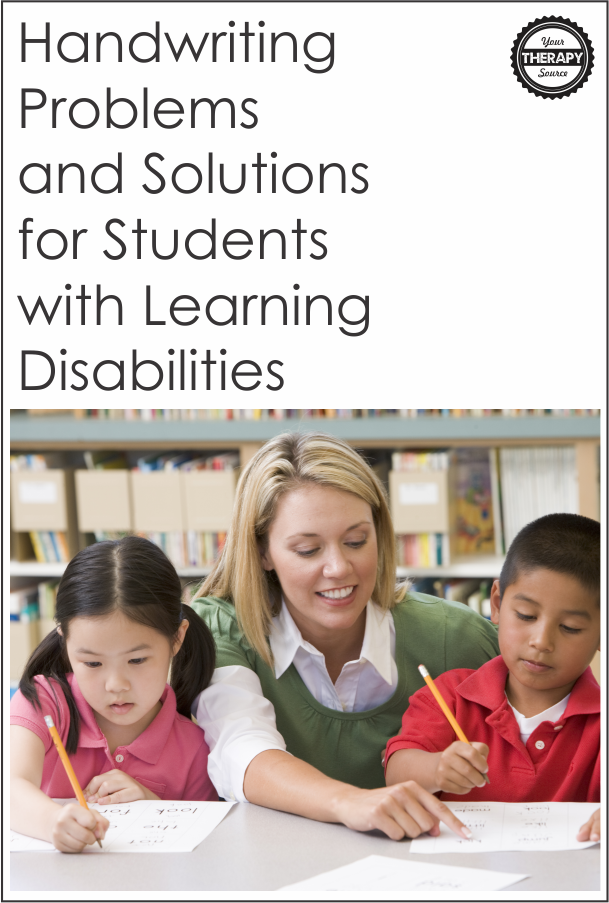Handwriting Problems and Solutions for Students with Learning Disabilities

School based occupational therapists and teachers frequently encounter handwriting problems and develop solutions for students with learning disabilities in schools. Many school districts are moving away from handwriting instruction although students are still required to submit handwritten assignments. Children with learning disabilities may have slow, illegible handwriting resulting in decreased written output. Students in early elementary grades tend to have more issues with handwriting compared to the older grades. The skill of handwriting includes postural stability, fine-motor movement, visual-motor coordination and orthographic coding (committing letter names, shape, and sequence to memory). A problem solving approach to handwriting may help teachers to add in extra instructional time during the current busy schedules of today’s students.
Problem Solving Approach To Addressing Handwriting Problems and Developing Solutions
Teaching Exceptional Children published suggestions for a problem solving approach to handwriting instruction for elementary students with learning disabilities. (This problem solving approach is not necessarily limited to handwriting instruction and in general therapists tend to follow this approach for all functional skills.) Try following these steps to help teachers integrate handwriting instruction.
Problem Identification
Determine where the student is struggling by using informal observation, collecting recent writing samples, providing a writing prompt or perform a formal handwriting assessment.
Problem Analysis
Look critically at errors and try to determine if any patterns exist regarding letter formation, letter knowledge, speed or legibility.

Determine a Solution
The majority of successful handwriting interventions use a model–lead–test instructional framework. This framework means that the teacher provides the most support in the beginning then graduals reduces support as the student gains independence. During the modeling phase the teacher or therapist would show correct letter formation by following the appropriate sequence of steps to each
letter and saying or writing a series of letters to show correct alphabet sequence. Proceed to guided practice while monitoring progress and providing feedback. Finally, the student would perform handwriting without any support. Additional solutions may be needed as part of the solution such as visual cues for letter formation, memory retrieval activities, orthographic coding activities and fine motor skill activities.

Implementation and Monitoring
Once you determine what letters and solutions you will be using, implement evidence based strategies with consistency.
With regards to practice time, the evidence indicates that 15 minutes of daily handwriting can result in meaningful gains. Monitor the end of each handwriting session with data collection such as Handwriting Rubrics. Analyze the data to determine if you need add extra solutions, repeat certain strategies or move forward to practice new skills.
Reference: Shawn Datchuk. Teaching Handwriting to Elementary Students With Learning Disabilities: A Problem-Solving Approach
TEACHING Exceptional Children September/October 2015 48: 19-27, doi:10.1177/0040059915594782
Handwriting Stations includes the materials to create a handwriting station on a tri-fold or in a folder. The station includes proper letter formation for capital and lower case letters, correct posture, pencil grip, warm up exercises, letter reversals tips and self check sheet. In addition, there are 27 worksheets for the alphabet and number practice (Handwriting without Tears® style and Zaner-Bloser® style). This download is great for classroom use, therapy sessions or to send home with a student. Find out more information.
Read more on Handwriting Instruction
Evidence Based Research on Why Students Need Traditional Handwriting Practice
Handwriting Problems – Can You Predict Them?
How to Use Graphic Organizers to Help Students with Learning Disabilities
Keyboarding versus Handwriting Speed and Learning Disabilities




